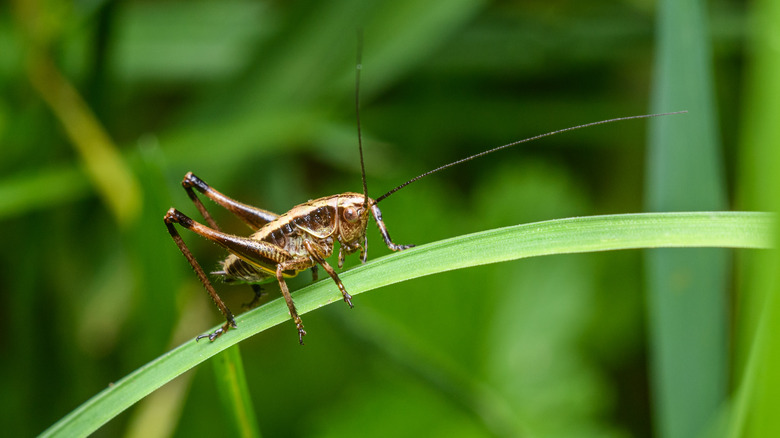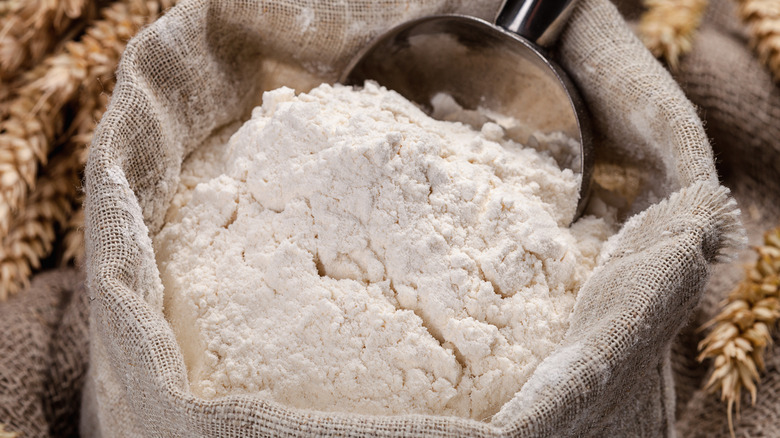Banish Crickets From Your Garden With The Help Of A Simple Baking Ingredient
While some may find their summers charming and restful, many remain ill at ease due to the silent war being waged in their yard by destructive crickets, grasshoppers, and other tiny chewers. That goes double if they have a vegetable or flower garden worth preserving. It can be heart-rending when you step outside to check out your garden, only to be met with the stain of half-eaten leaves and chewed holes in your produce. So, how do you control your cricket count? The solution is simpler than you think. It's also affordable and completely natural. We call it the "flour-on-flower" technique. And all it takes is ordinary white baking flour from your kitchen.
The key lies in flour's starchy qualities, which are amplified for tiny organisms like crickets. When you sprinkle flour over your plants, it will inevitably get eaten by those garden pests. When crickets consume flour, it collects and thickens in their mouths and digestive systems, leaving them unable to continue eating. Eventually, they'll leave your yard or die off. While there are several great ways to get rid of crickets, we will hone in on this cost-effective method.
Tips for using flour to deter crickets
Start by identifying areas in your yard where cricket activity is highest. This might be around plants, near entry points to your home, or places where you've observed plant damage. Then, get out basic baking flour; avoid using blends with additives (like salt) or flavorings, as those types can cause havoc to your greenery. Apply the baking flour generously, concentrated on spots where crickets are frequently seen, such as areas with vegetation or sources of moisture. Use a sifter or a mesh strainer to disperse the flour, ensuring complete coverage over any affected plants and any plants you suspect might be tampered with. Consider doing this in the early morning when the dew point is relatively high, as it will help the flour cling to the plants a bit better. However, ensure it's not too wet, as it may cause the flour to drain off the stems and leaves.
It's important not to let the flour stay on your plants for more than two consecutive days at a time. Any longer and your cricket remedy may interrupt your plants' photosynthesis cycles, causing them harm. After a couple of days, clean off your plants with a gentle misting and assess your results. If needed, you can wait a few days and repeat the process. With these steps, you'll have a balanced, cricket-free garden in no time!

